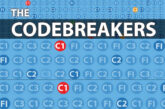
Need help with cracking those EICR codes? The technical team at NAPIT, with the help of the 18th Edition Codebreakers publication, answer your latest coding queries. Click on the photos for a closer look!
MIKE: I found this while carrying out an EICR in a metal fabrication workshop. “So how do we overcome no spare MCB ways?” The red/yellow/blue feeds another 3 phase DB in a timber-framed antique building, filled with priceless objects.
Unfortunately this is often seen in commercial installations carried out by seemingly time-served electricians and is most likely pre- 2005, especially given the cable colours.
There’s no excuse for this, and I can only assume the installer was looking to increase the main DB circuit number capacity, without replacing the DB itself, by fitting an extension enclosure/DB adjacent to the main DB.
This isn’t uncommon, but it has to be done correctly, and there are several routes to achieve this. For clarity, this isn’t one of them!
It is a fundamental requirement for conductors to be protected against overload current and that has most likely not been exercised here. Given there are occurrences in BS 7671, which allow downstream protection (for example, Regulation 434.2.2.) I don’t feel that is the case here, taking account of the difficulty in confirming the SWA conductor size from the photos (or its type either 70oC SWA or 90oC XLPE – its likely to be SWA). Neither can we confirm the size of the device protecting the cable exiting the extension DB.
The connection point of the extension DB is via the incoming terminals of three single-phase MCBs. This point of connection isn’t intended to be for conductors of this type or in this configuration. The MCB terminations at this point are designed to be fitted to the manufacturer’s busbar; they’re not designed to incorporate a second conductor ‘piggybacked’ on to the terminal.
This type of modification isn’t likely to meet the manufacturer’s instructions, and may well produce issues with overheating if the correct conductor clamping and torque requirements haven’t been met.
Other issues to look at here, given the general state of the installation techniques are:
1. The radius and stress of the interconnecting piece of SWA (between main and extension DB), plus adequate securing via a clamp, etc. (or lack of it).
2. The effectiveness of any Earth continuity between SWA glands and metal enclosures.
3. The possible IP infringement of the extension DM blanking plate. Although not likely an IP2X infringement, it doesn’t appear to be fitted correctly. Without further investigation I can’t comment on whether there is access to live parts, as the conductors may connect directly to the device and not use a bus bar.
4. Adequate isolation for maintenance etc. Generally, it would be assumed that an MCB would isolate the extension DB from within the main DB, but that isn’t the case here, as to isolate the extension would require complete isolation of the main DB. This may cause problems with disruption, and potential danger if an ordinary person believed they had isolated the extension DB, when in fact they may not have done.
5. The timber framed antique building filled with priceless objects should be subject of a fire risk assessment, carried out by a competent fire risk assessor. It’s likely that a 300 mA RCD would be specified for the protection against fire.
6. Exporting the earthing system to an external building would have to be investigated.
7. The external building may require a multi-pole isolator for all live conductors, if operated by ordinary persons.
You can order your copy of NAPIT Codebreakers by clicking here







